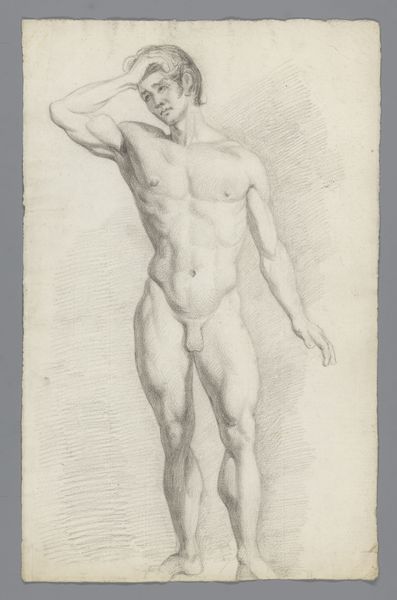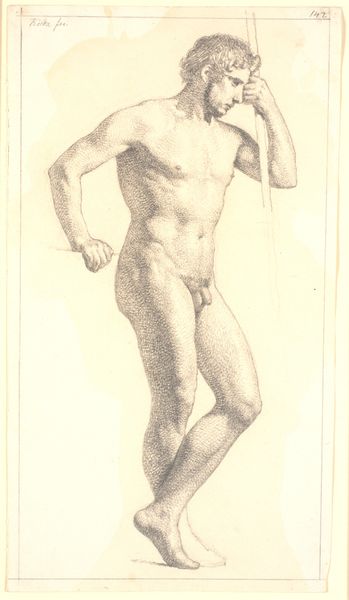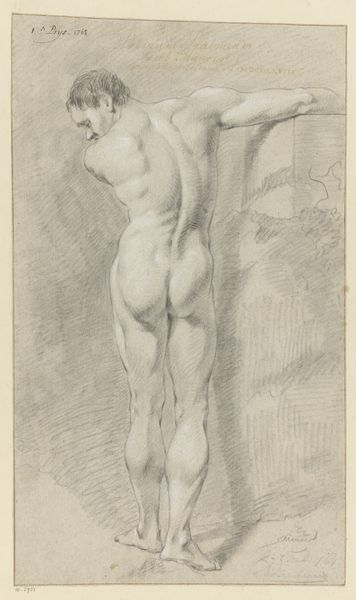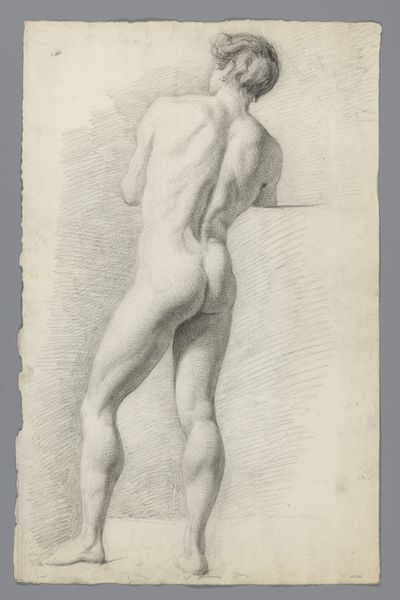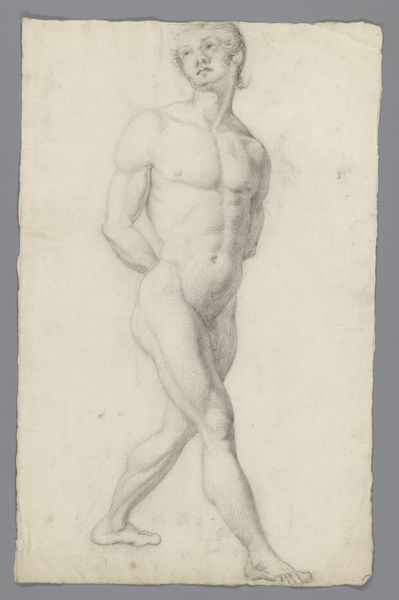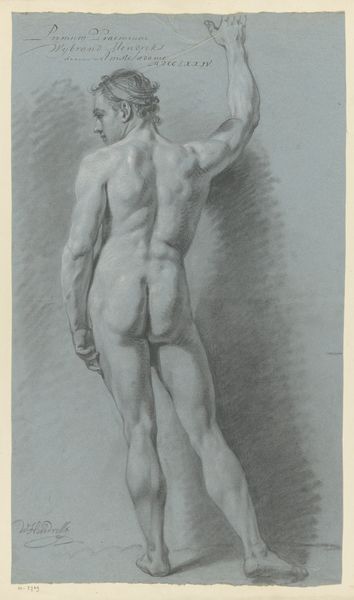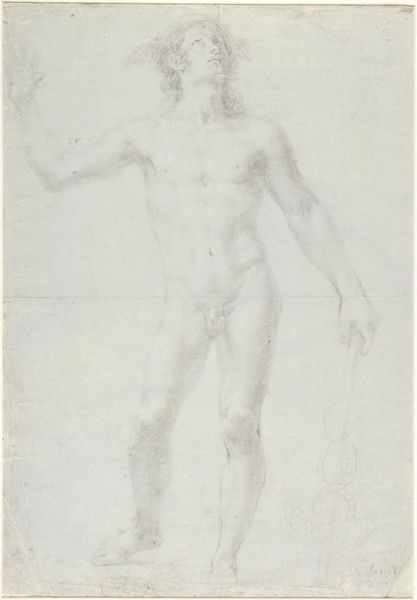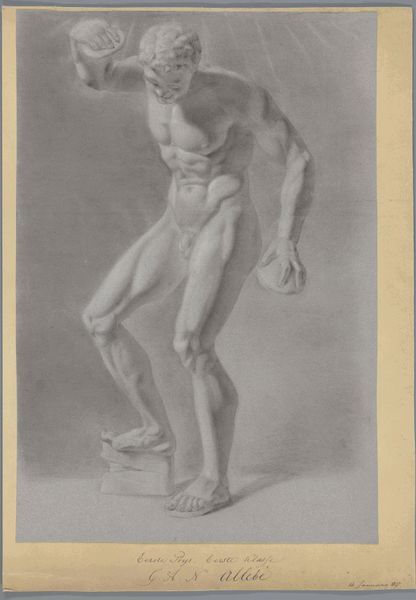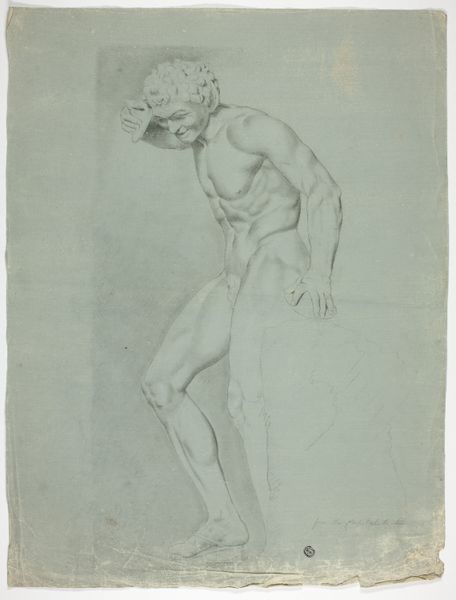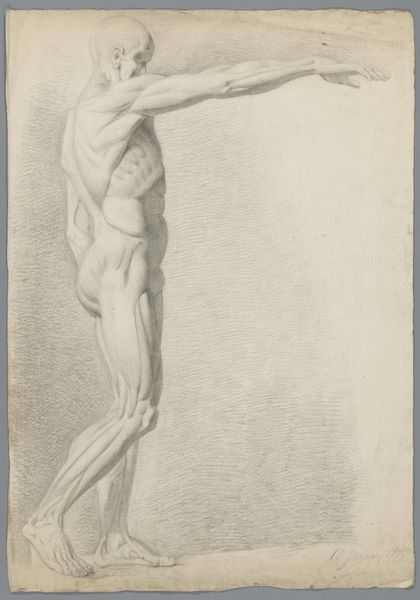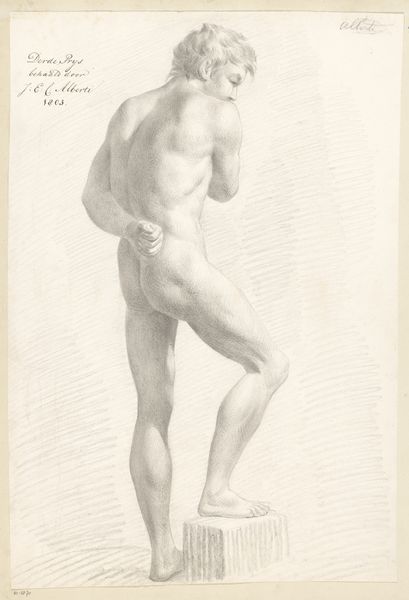
drawing, paper, pencil
#
pencil drawn
#
drawing
#
classical-realism
#
charcoal drawing
#
figuration
#
paper
#
form
#
pencil drawing
#
ancient-mediterranean
#
pencil
#
line
#
portrait drawing
#
academic-art
#
nude
Dimensions: height 533 mm, width 377 mm
Copyright: Rijks Museum: Open Domain
Curator: Today we’re looking at Gerard Allebé’s "Study of a Classical Sculpture," likely from 1826, rendered meticulously in pencil on paper. It strikes me immediately by its quiet austerity. The shading is so subtle. Editor: It’s almost ghostly, isn’t it? The rendering feels very tentative, like Allebé is feeling his way through the form, unsure of its full presence. And the support itself -- the visible weave and imperfections in the paper -- speaks volumes about process here. It’s an underdrawing. Curator: Precisely. Its very existence is deeply embedded in a longer narrative of the academic study of the male nude figure in art and Western canon, isn’t it? Allebé’s engagement with classical form, with ancient ideals, puts him directly into conversation with power structures that shaped art instruction and production for centuries. Editor: Yes, and think about the labor involved. The countless hours of studying, sketching, the selection of materials... the grain of the paper practically screams ‘discipline.’ We can almost trace Allebé's hand as it moves with exacting care over the surface. This wasn't a quick sketch. The physical act is integral. Curator: Right. There's something almost tragic in seeing that labour devoted to replicating a form itself laden with centuries of ideological baggage: the power of the male gaze, the suppression of other forms. Editor: It becomes a dialogue with, even perhaps a contestation of, that classical form itself. Is he absorbing its traditions, or interrogating its materiality? Curator: It certainly compels a closer look, even generations later. We see the past but must reflect on it now. Editor: It makes you realize art and culture are produced in real material conditions; these conditions affect our interpretations, too.
Comments
No comments
Be the first to comment and join the conversation on the ultimate creative platform.
